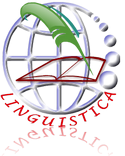TRANSITIVITY IN BARRACK OBAMA™S SPEECHES
DOI:
https://doi.org/10.24114/jalu.v1i2.676Abstract
Abstract The objectives of this research were to find out the types of processes, participants, and circumstances, the dominant types of processes, participants and circumstances, and the implication of the dominant process, participant and circumstance in Barrack Obama™s speeches. It was a descriptive quantitative design. The analysis was based on two speeches of Barrack Obama, they were Election Night Victory Speech (November 4th, 2008) in Grant Park, Chicago, Illionis and Obama Inaugural Address (January 20th, 2009) in Washington DC and there were 525 processes, 618 participants, and 204 circumstances in 525 clauses. The result showed the most dominant process was Material process (54,6%), the most dominant of participant was Actor (31,1%), and the most dominant of circumstance was (46,1%). Material Process is the most dominant process because it indicates activities that happen in the outside world of human beings. Furthermore, the speeches of Barrack Obama told about many activities that can be done to make America better. So, the physical or action verbs are mostly used as the representation of the physical experience of human beings. As the process controls the participant so the most dominant participant which appeared in the analysis was Actor. And the last, the most dominant circumstance appeared in this analysis was Location. It was caused Obama mentioned more both place and time in his speeches as the implication of the most dominant process, participant, and circumstance. Keywords: Speech; transitivityDownloads
Issue
Section
Articles
License
Copyright (c) 1970 Henny Fauziah Harahap, Sumarsih Sumarsih

This work is licensed under a Creative Commons Attribution-ShareAlike 4.0 International License.
Authors who publish with this journal agree to the following terms:
- Authors retain copyright and grant the journal the right of first publication with the work simultaneously licensed under a Creative Commons Attribution License that allows others to share the work with an acknowledgment of the work's authorship and initial publication in this journal.
- Authors are able to enter into separate, additional contractual arrangements for the non-exclusive distribution of the journal's published version of the work (e.g., post it to an institutional repository or publish it in a book), with an acknowledgment of its initial publication in this journal.
- Authors are permitted and encouraged to post their work online (e.g., in institutional repositories or on their website) prior to and during the submission process, as it can lead to productive exchanges, as well as earlier and greater citation of published work (See The Effect of Open Access).
- This work is licensed under a Creative Commons Attribution-ShareAlike 4.0 International License.

